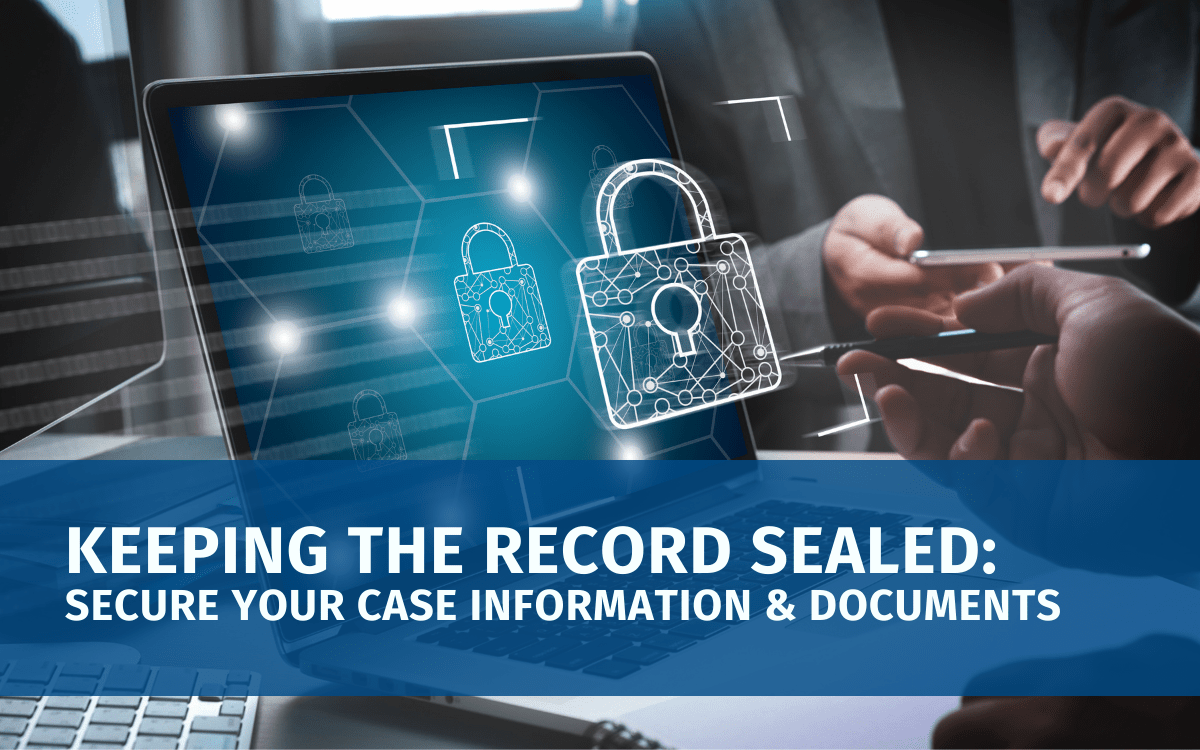How Do Court Reporters Transcribe?
This post originally appeared on the Cook & Wiley blog.
A court transcript is the record of every spoken word and who spoke it during court. In order to capture this transcript, a court reporter must be able to hear the entire proceedings and set them down as they occur. At one time this was done using shorthand, which is an abbreviated way of writing that is able keep up with speech. An early version of the stenotype machine was created in 1877 by Miles Bartholomew, who was a court reporter and hoped to replace pen and paper with his invention. Today, court reporters get special training in order to understand legal terminology and process and use special equipment to create transcripts of court proceedings, as well as creating legal records of hearings, depositions, or other meetings requiring an official transcript.
REQUIRED TRAINING
Training to become a court reporter requires fulfilling the general requirements and standards at a certified court reporting school that has been accredited by the National Court Reporters Association (NCRA). Required courses generally take around three years to complete, and applicants must have a GED or high school diploma to enroll. Some schools have prerequisites in keyboarding or data entry skills that must be met, as well. Classes include information on keyboarding, machine shorthand, law, legal terminology, court reporting, vocabulary, proofreading, medical terminology, dictation, ethics, and more. A student learning court reporting must also take speed building classes and spend a generous amount of time practicing with the stenotype machine, because 225 words per minute is the minimum requirement to pass keyboarding.
Upon graduation, the student receives a Registered Professional Reporter certificate from the NCRA. A Certified Shorthand Reporter license is required as well in order to obtain work as a courtroom reporter. States have different license requirements, but an extensive written exam in addition to a performance-based dictation test is fairly standard.
EQUIPMENT USED
In order to be able to capture every word that is spoken during the courtroom proceedings, a courtroom reporter must be able to produce the transcript accurately and at high speeds. This is most commonly done with a stenotype machine. This machine, although much different than the one originally created by Miles Bartholomew, uses the same concept of keys that may be pressed simultaneously in order to create words, sounds, and phrases quickly. The stenotype has 22 black, unmarked keys set up in a way that resembles a piano’s keys more closely than a typical qwerty keyboard. These keys represent some of the alphabet, and combinations of keys must be used for the letters not included.
Rather than typing out words, a stenotype machine produces a phonetic code that relates to sound. The reporter’s left hand types the beginning consonant sounds, thumbs produce vowel sounds, and the right hand types the final consonant sounds. Various other key combinations that create both initial and final sounds can be made involving both hands. In this way, court reporters can keep up with conversations at high speeds. In the past, the record rolled out of the machine on steno paper, but it is becoming more common now for the stenotype machines to have a digital readout screen.
There have been several popular methods of producing and translating the phonetic record, but since the sounds produced were not standardized, court reporters could personalize their own method of keystroke combinations to produce and translate the report. This wasn’t necessarily a good thing, since it could be difficult to impossible for anyone but the original reporter to read the transcript. One of the more common translation theories has been used to create computer software that translates the code, so now reporters are more likely to use that method when typing.
A PC-compatible laptop can be connected to a stenotype machine in order to produce captions of the proceedings in real time for the hearing impaired. Since the report is usually digital now, the transcript can be uploaded to the computer to be translated, prepared, and sent through email. There are several different software programs that court reporters may find useful, such as scheduling and billing, in addition to the software necessary to link the laptop and stenotype machine, translate the transcript, and produce closed-captioning.
COURT REPORTERS: THE BEST CHOICE
Some people believe that electronic methods will eventually replace humans in the field of court reporting. This seems unlikely in the near future, though, because while computers do have the ability to document and reproduce in a record all sounds created in the courtroom when they work like they are supposed to, they are not able to interpret the difference between words that need to be recorded and random sounds, like chairs scraping the floor. Malfunctions and constant needs for updates have discouraged even the most pro-technology advocates. It continues to be both less expensive and more effective to hire a professional court reporter.
Read More From Planet Depos

Depositions in the United Kingdom Post-Covid
The United Kingdom is open and depositions are scheduling. Get all the details to schedule in-person and remote depositions in the U.K.
Read Now View Full Post
International Travel Alert! In-Person Depositions Can Resume in Korea
Korea has made it possible for U.S. attorneys to take in-person depositions again. Here is what you need to know to travel to Korea.
Read Now View Full Post
Tips to Help You Handle Workplace Stress
Workplace stress is part of the legal world. Here are some tips to help you manage stress and maintain your health!
Read Now View Full Post
Keeping the Record Sealed: Secure your Case Information and Documents
Court reporting agencies should keep your confidential information sealed. Here are key measures they take to do that.
Read Now View Full PostSchedule a Proceeding Today!
Your remote mediation should be simple, and with Planet Depos yours will be. Schedule today and we’ll get you set up with a Zoom room, a PD Technician, and everything you need to get started.
Schedule now